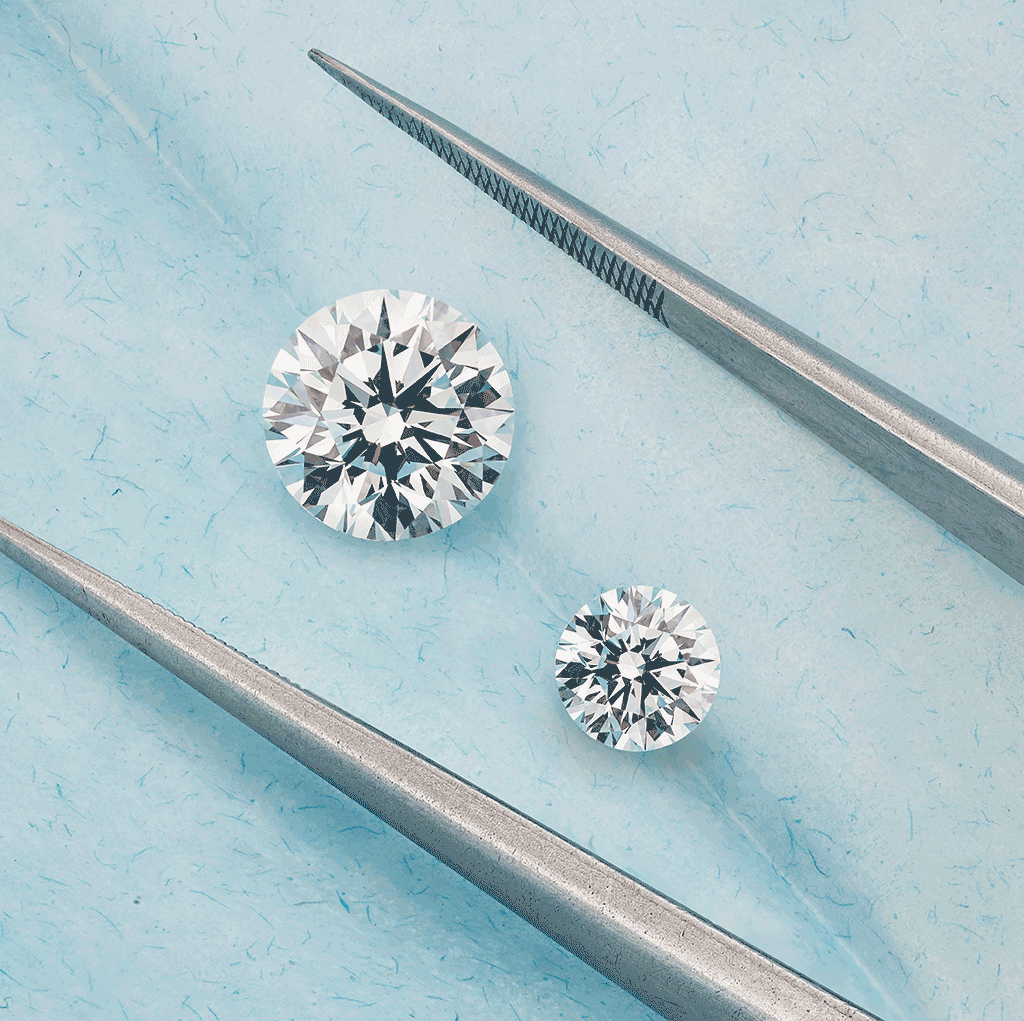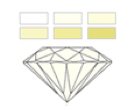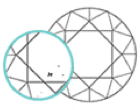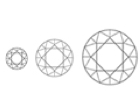In today’s world, the diamond market is more diverse than ever. If you are in the market for a diamond, you may see a lot of Lab-grown diamonds being offered by various jewelers. You may wonder, what’s the difference between a lab-grown diamond and a natural diamond? What standards are lab diamonds held to for certification and grading?
Natural Diamonds
Diamonds can essentially be split into two categories, natural or lab-made. You might assume that “natural” is always better, but that isn't necessarily true when it comes to diamonds!
The only difference between a natural diamond and a synthetic diamond is where they originate from. In nature, diamonds are created because of billions of years of pressure and heat. These diamonds are unearthed and carefully cut into different shapes to make your beautiful ring or bracelet.
The labs that make diamonds can take those billion years of pressurization and condense it down to just a few weeks, using technology that mimics the natural process. Due to this, lab-grown diamonds and natural diamonds have essentially no difference in their result; it’s just the process of how they get made that’s different.
After reading the above, you know that lab diamonds and natural diamonds are chemically identical. It might not surprise you then that diamonds are graded using the same standards used for grading natural diamonds.
Each diamond is graded by professionals (called gemologists) based on the diamond’s “Four C’s,” The four grades are recorded to put together an overall final grade.
Whether natural or lab-made, your diamond will be graded the same way. These grading standards are known as the four C’s. What are the four C’s, and what should you look for in a diamond?
The cut refers to how well the diamond is cut and polished. Cut also pertains to how well-proportioned the diamond is, although it is not concerned with the shape of the diamond. Diamonds can be physically cut into many different shapes, but the “cut” of the diamond in the grading process means something different. A well-cut diamond will have consistent, well-proportioned brilliance and sparkle throughout. A poorly cut diamond will be lackluster and may lack brilliance and fire.
In the case of a diamond, color refers to the lack of color. The clearer a diamond is, the better the color rating. D, E, and F are colorless diamonds that present as the whitest and purest stones on the grading scale. The D rating is the highest color grade available. G, H, I, and J are considered nearly colorless diamonds but will still present with warmer hues.
Clarity refers to the quality of a diamond, location, and type of inclusions (also known as “birthmarks”) that the diamond has. Inclusions are tiny internal imperfections, especially natural diamonds, that a stone can have. Diamonds with higher clarity grades are more valuable if a diamond is rated “internally flawless – IF,” which would be the highest rating possible for clarity. VVS1- VS2 diamonds are diamonds that will be clean to the naked eye, meaning no inclusions will be visible to you without special equipment. Then, stones with SI1 and SI2 ratings are typically eye clean, but some can detect the imperfections without any magnification or special tools depending upon the type and location of the inclusions.

The carat of a diamond indicates the actual weight of a diamond, while the dimensions of a diamond reflect the measurements and how that weight is distributed. Like people, you can see two people at the same weight that look different because they carry that weight differently; the same phenomenon happens with a diamond. For example, you could have a diamond with a lower carat rating that offers larger measurements than a diamond of a higher carat weight but with smaller measurements.

Whether natural or lab-made, your diamond will be graded the same way. These grading standards are known as the four C’s. What are the four C’s, and what should you look for in a diamond?
Lab-grown diamonds cannot be produced to be uniform in their qualities. They also can’t be engineered to meet demands, so qualities like their carat size, color, cut, and clarity can’t be controlled.
Why? Well, contrary to popular belief, the growth process is not within human control, even if it’s initiated by humans. The lab process mimics the natural diamond process, so each diamond will grow individually to develop its own unique characteristics, just like a natural diamond.
Lab-made diamonds will present with various qualities and still need to be assessed by the same grading criteria that are applied to grading natural diamonds.
Lab-grown diamonds are certified by the same institutes that grade natural diamonds. They are certified by well-known institutes such as the IGI (International Gemological Institute) and GIA(Gemological Institute of America). The IGI became fully equipped to identify and certify synthetic diamonds in the early 1990s. The IGI is known worldwide for its quality of work.
These institutions can identify a lab diamond from a natural diamond since they study the tiny physical and molecular level differences that occur in them. They study both types of diamonds in-depth and can distinguish them from each other using highly equipped laboratories. They certify the diamond by considering the four C’s of diamond standards.
They create an analysis of each stone’s qualities passed under their examination and deliver a comprehensive report, including details on the origin of the diamond. Lab diamonds are given a score on each of these four C’s, just as a natural diamond is. As a result, a certificate is issued to the jewelers for every natural or lab-grown diamond.
There are a lot of misconceptions about lab diamonds. Of course, they are a new invention in modern jewelry history, so it’s understandable. Lab diamonds and natural diamonds are examined and certified using the same criteria. Like the GIA and IGI, only professionals can truly see the differences between a natural and lab diamond. Regardless, they are all certified on the same criteria, so you can be sure that whether you choose a lab or natural diamond, they are both held to the same standards of quality and beauty.









